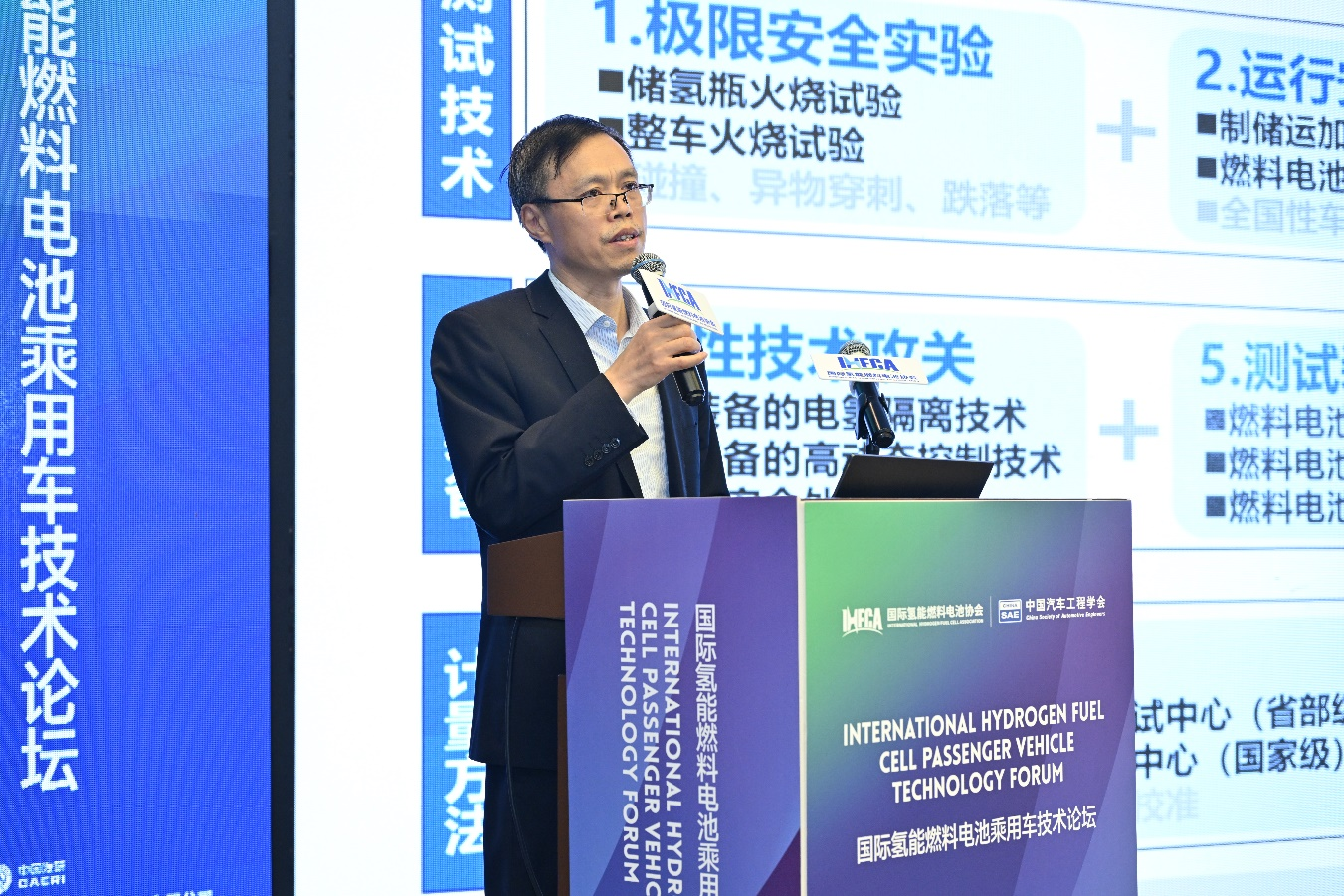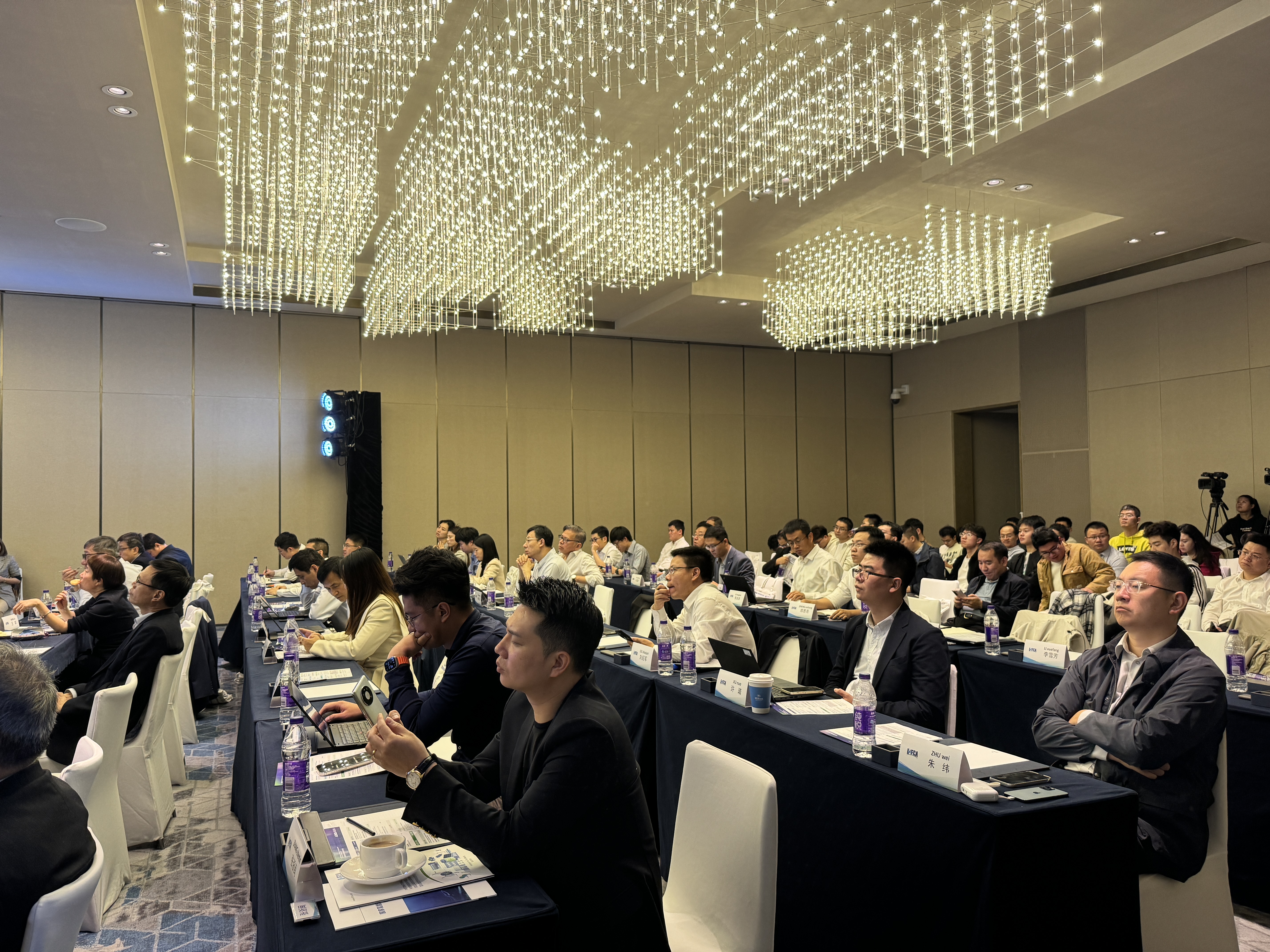 Bridging News
Bridging News
China's CAERI Pushes for Hydrogen Safety Innovation to Accelerate Sector Growth | Insights
Chongqing — On October 31, at the 2024 International Hydrogen Fuel Cell Passenger Vehicle Technology Forum in Chongqing, Liu Anmin, General Manager of China Automotive Engineering Research Institute Co., Ltd. (CAERI), delivered a compelling keynote on accelerating hydrogen safety technologies and equipment development to foster high-quality growth in the hydrogen energy sector.
The forum, co-hosted by the International Hydrogen Fuel Cell Association and the China Society of Automotive Engineers, attracted over 10,000 online and offline participants. This included experts in hydrogen supply, fuel cell systems, vehicle manufacturing, and certification, highlighting the strong interest and discussions surrounding hydrogen innovation.

Liu Anmin, General Manager of China Automotive Engineering Research Institute Co., Ltd. (CAERI). (Photo/China Society of Automotive Engineers)
Liu highlighted the strategic importance of hydrogen in China's energy transformation, as outlined in the country's "Hydrogen Industry Development Mid- to Long-Term Plan," positioning hydrogen as a core element of the national energy system.
Liu noted that, with supportive policies in place, the hydrogen fuel cell vehicle market is expanding rapidly. He shared that CAERI's discussions with automakers, like Qingling Motors, revealed the fuel cell unit costs have dropped below 2,000 yuan, a price point that underscores the sector’s growing economic viability and competitiveness.
Hydrogen safety remains the top priority
However, Liu warned that despite technological advancements, hydrogen safety is still a major challenge for the industry. Hydrogen's unique properties—its small molecules and low density—raise significant safety concerns that limit its wider application. Current safety standards, including those for hydrogen storage tanks and vehicles (such as standards 35544 and 24549), are inadequate because of a lack of understanding of failure mechanisms, which hinders the effective assessment of critical safety indicators.
Liu underscored the need for scenario-based testing, especially in complex environments such as tunnels or in fire emergencies, where the safety reliability of hydrogen fuel cell vehicles remains under-examined.
CAERI has proposed a "3+3+2" solution framework to address these pressing issues, focusing on extreme safety experiments, operational safety monitoring, and overall industry safety regulation testing. Liu detailed collaborative projects, such as the recent hydrogen system fire test conducted with emergency management departments and multiple automotive firms, which filled a gap in domestic research on fire response.
This trial revealed potential risks, including physical overpressure and sensor failure after 10 minutes of sustained fire exposure, providing valuable insights for future safety designs.

The total participation online and offline exceeded 10,000 people. (Photo/Chen Yuting)
On the measurement front, Liu disclosed that CAERI is building a dedicated hydrogen metrology platform, developing industry-specific measurement methods to ensure the accuracy of product performance and safety assessment outcomes. He stressed that establishing authoritative testing centers is crucial to supporting the sustainable growth of the hydrogen sector, as precise measurement standards are essential to gaining market and regulatory confidence.
Liu announced that CAERI plans to establish an all-scenario hydrogen safety testing site to conduct deeper research on hydrogen behavior in scenarios such as leaks, diffusion, and combustion.
He also highlighted the newly formed Hydrogen Safety and Equipment Division under the International Hydrogen Fuel Cell Association as a platform for advancing safety technology research, policy consultation, and standards development. Liu called for enhanced public awareness efforts to counter safety concerns and build confidence in hydrogen technologies.
 Related Stories
Related Stories